Try this: go to your pantry and pick up a boxed food. The odds are pretty good you'll find corn in there in some form: corn syrup, cornmeal, plain old corn, or one of many variants.
Corn makes the world go around nowadays – it's a staple in many diets and provides a reliable food source for billions of people worldwide. It's also a source of livelihood and income for millions of farmers in hundreds of countries.
But how did this situation come to be? In this post, I'll cover the history and interesting facts about this remarkable plant.
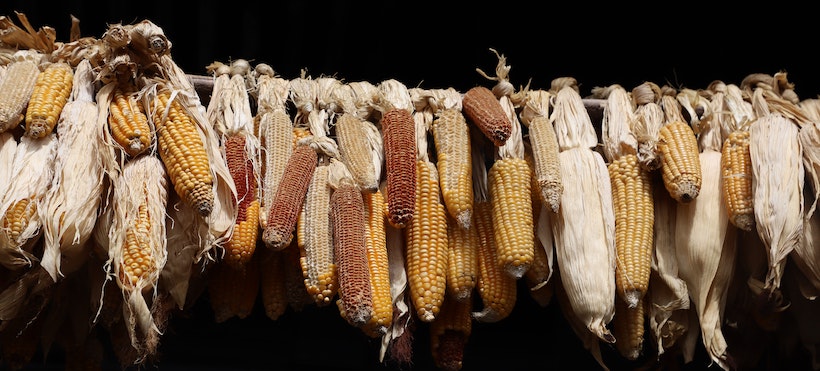
Before we dive into the history, let's look at an overview of our favorite kernel-possessing husked food.
Corn is a cereal grain that belongs to the grass family. It has been a domesticated crop for thousands of years and is one of the world's main staple food crops.
What's so interesting about the crop is that humans have selectively bred it from – as you'll see in a bit – glorified grass. This process has taken centuries to produce the look and taste of the corn we know of today.
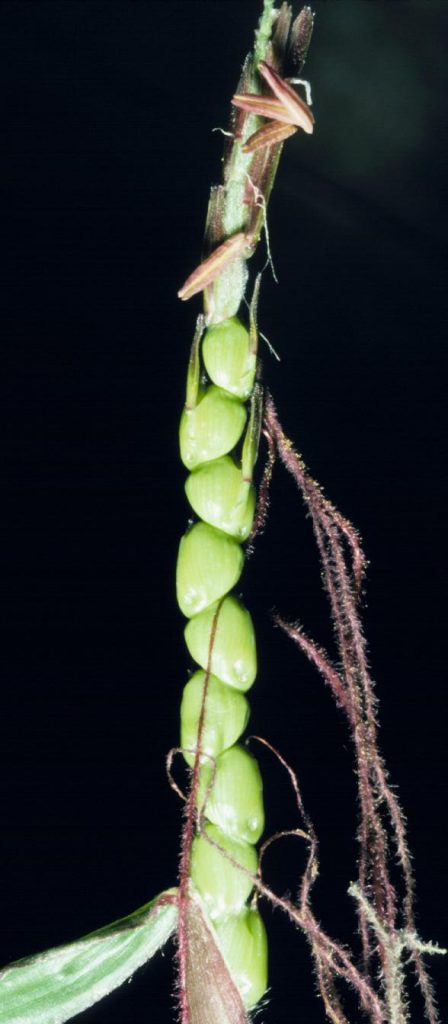
Corn comes from a wild grain called teosinte, and, because of selective breeding, many people wouldn't know that the grain is corn's parent plant if you put them side by side.
Teosinte has different features than the modern-day crop. For instance, teosinte has between just five and ten kernels, while domesticated corn can have over five hundred! But for both corn and teosinte, kernels are the fruits of the plant.
From its early origins of teosinte, our edible corn has also developed substantially. With its 'tooth-cracking' hard shell, the teosinte plant had small and hard ears that enveloped the kernels. Generations of breeding softened the hard shell of the original teosinte grain. Today, corn has a longer and softer shell.
Most people associate corn with the highly recognizable, vibrant, yellow kernels on a cob – all wrapped in a green leafy husk. In contrast, its parent plant teosinte is a lighter yellow mixed with a green plant color.
And besides the famous yellow sweetcorn, the plant also has hundreds of varieties with numerous colors and tastes. Types include the dark Blue Hopi, the yellow-and-white Ambrosia sweet corn, the rich red Ruby Queen, and the multi-colored Indian Flint corn.
Corn's modern taste is also vastly different from its origins prior to selective breeding. As 21st century humans, we enjoy the sweet and refreshing taste of corn. Before breeding, however, the taste of teosinte was like a dry, raw potato.
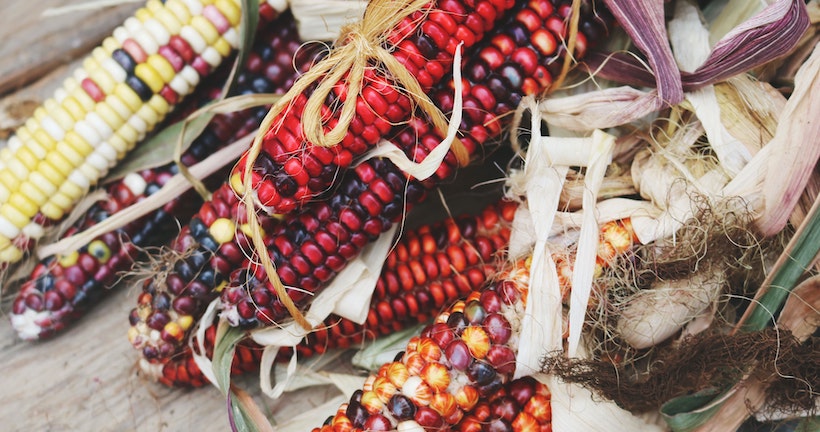
Corn and maize are generally the same in English, but we came to the words from different angles. In pre-corn Europe, "corn" was a word to refer to the individual fruit or yield from a grain. (Think peppercorn here and note some areas would refer to their wheat yield as corn.)
Maize comes from the Taino language's (now-dead) mahiz, referring to the crop that we know as corn. Spanish conquistadors adopted the name maiz and lent its name to the Latin: Zea mays.
So: both maize and corn are usually the same things in English speaking countries nowadays. Maize is the correct word from a scientific and international business perspective, and corn is more situational – but keep calling it what you call it!
The peak season for corn in the United States is from May through September. It can grow in all states throughout America (even Alaska!), but it is also grown in many other South American, European, and Asian countries, too.
Mexico, Nicaragua, Guatemala, Brazil, and Argentina have large crops, as do France, China, Russia, and India.
Maize is a warm-season crop, and for best yields, the ideal planting soil temperature is above 50 degrees Fahrenheit, with 50% available moisture. It grows better in warmer climates, however note it has moderate water requirements as well.
High in iron, zinc, potassium, magnesium, and phosphorus, the crop holds many vitamins, including C, E, and A.
Very importantly – without certain types of processing – it is low in bioavailable niacin (one form of the vitamin B3). Niacin is an organic compound and an essential human vitamin. People in countries whose diets consist primarily of corn are more likely to develop pellagra, a disease caused by low levels of niacin in the body. (Some genetically modified variants work around the niacin deficiency)
So, even though corn possesses many essential nutrients and vitamins, you still need to eat a complete diet. You must eat a healthy balanced diet, taking care to incorporate other foods with sufficient niacin. Or – prepare your corn using nixtamalization.
Corn-eating native populations in the Americas didn't develop pellagra due to a preparation process known as nixtamalization.
By preparing corn kernels in an alkaline solution (most often lime – from limestone, not the fruit), you can make bound niacin in corn more bioavailable. As a bonus, it also reduces the concentration of aflatoxins in the corn.
While nixtamalization did spread through the native populations, it didn't travel with corn back to Europe. And most communities who had issues due to corn didn't use a traditional preparation method.
A further aside: the fact nixtamalization got left behind may have even spurred the myth of the vampire!
Pellagra is characterized – in extremis – by the "4 Ds": diarrhea, dermatitis, dementia, and (eventually) death. Subclinical or "mild" pellagra is marked by increased sensitivity to the sun, poor mood, well-demarcated rashes, and (especially in folks with lighter skin) pallor. As vampire myths started in the 1700s – before pellagra was identified in 1735 – could symptoms of pellagra have inspired vampires?
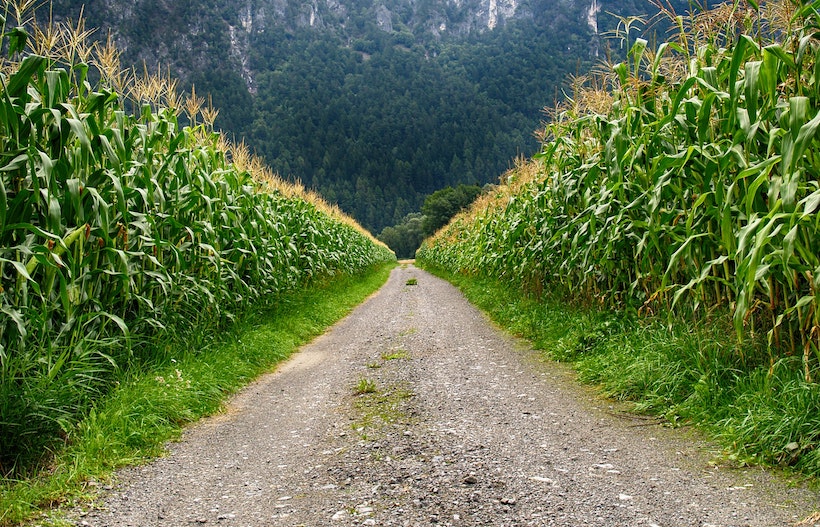
The current frontrunner theory for the evolution of corn is it evolved from its precursor, teosinte. Scientists believe that it evolved from extinct precursor corn that contained glumes that covered the kernels. Today, you can find wild teosintes in the Southwestern Mexican state of Guerrero.
Evidence suggests maize was domesticated only once, roughly 6,000 - 10,000 years ago in Mexico. Best guesses point to the Iguala Valley in the northernmost part of Guerrero.
It is presumed that the early Native Americans painstakingly bred the grain from wild grasses and cross-bred plants to make hybrids. The crop eventually spread north to southwestern America and south to the coast of Peru.
When Native Americans and Indians began migrating north to North America, they brought corn with them as their staple food source, possibly hugging the Mississippi River as it migrated north. By 4,000 BCE, there is evidence of corn in what is now the Southwest United States.
Corn is one member of the famous Native American three sisters, most popularly associated with the Iroquois and Mandan tribes. The sisters – winter squash (such as pumpkins), corn, and beans – provide mutually beneficial growing support. Corn grows the tallest, allowing beans something to climb. And in turn, the beans provide nitrogen for the squash and corn, while the squash spreads over the surface, choking out invasive weeds and shading the ground.
The name three sisters originate from the legend of "ones who sustain us." And it's a clever hack – the three plants are varied enough in soil and drought and pest tolerance to be nearly a perfect team. As a bonus, the three reduce the need to turn over soil or rotate crops – they're a fantastic early example of beneficial mixed intercropping.
As the crop was a staple ingredient in the Native American diet, it made its way into many dishes. From dumplings, tamales, hominy, and even a "wedding cake" bread, Native American people were very inventive in how they used it.
In 1492, when Columbus "discovered" the New World, it also led to his introduction to many crops subsequently introduced to Europe.
Maize was first introduced to Spain after Columbus ordered two Spaniards to explore Cuba, and they returned with the crop. This exchange of plants, food, and livestock was called the 'Columbian Exchange.'
Thanksgiving is a holiday feast that dates back to November 1621. The pilgrims (or puritans) are best known for sharing their harvest celebration with their Native American Neighbors. The first Thanksgiving was three days long, celebrating the first successful harvest. It brought Native Americans and pilgrims together for a harvest feast.
The feast included pumpkins (but probably not pumpkin pie), venison, turkey, cod, and bass plus the successful harvest, which included a vast amount of corn!
Corn – along with other crops such as tobacco – was an extremely popular crop in early America. European crops such as wheat, oats, rye, and spelt didn't take as well to the Eastern seaboard – corn varieties such as white dent proved much more versatile as a staple crop.
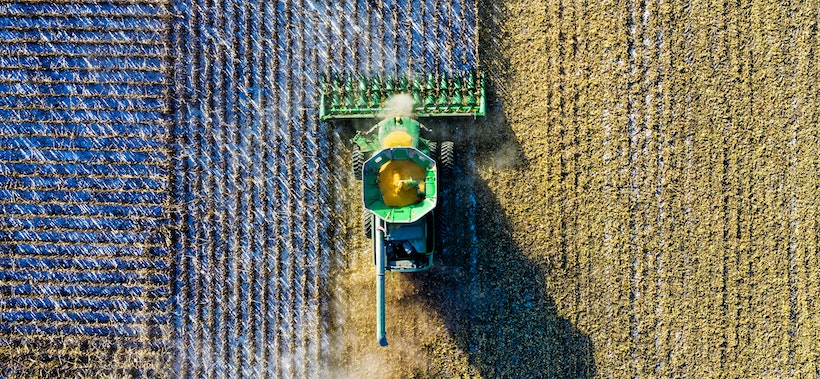
As previously mentioned, the crop is extremely versatile and is used to feed livestock and humans. But to that end, it also has other uses that are not food-related.
It can be turned into ethanol, used for brewing beer, turned into high-fructose syrup, turned into cooking oil, and can even be turned into bio-plant-based plastics.
Corn's evolution is genuinely amazing to trace, and it actually accelerated over the last couple of hundred years. The rise of canning and industrialization, plus some inputs from science especially helped stretch the crop further.
Many early innovations came from the Minnesota Valley Canning Company, who started canning white corn as early as 1903. In 1929 they added a vacuum sealing process, greatly extending the shelf life of their corn.
You've probably heard of MVCC, even if the name doesn't yet ring a bell – today they're known as Green Giant.
Clarence Birdseye invented flash-frozen foods in 1922. While his invention had enormous implications for meat and meat-storage, it was also a boon for vegetables – everything from peas to corn can now be found in the frozen food aisle.
Hybridization in crops is using inbred plant varieties to produce very similar crops for one generation. By carefully selecting the parents, you can very accurately predict the conditions for the success of a crop – greatly increasing total yield.
Hybrid corn was just a theory in the early 1900s – Edward Murray East and George Harrison Shull both proposed a basis for hybrid corn. Donald F. Jones followed up by producing a double-crossed corn in 1917. Hybrid corn hit the market as early as 1922, but the true growth is due to the evangelism of Henry A. Wallace.
Wallace sold hybrid seeds in the 1920s, starting a company Hi-Bred Corn Company to sell his wares. Hi-Bred crafted deals, sold seeds, made bests, and came up with creative challenges to get farmers to switch – for example, A/B testing crops and only requiring payment if the hybrid yielded more!
And it worked – in Iowa alone, hybrid corn planting went from 1% in 1933 to roughly 100% in 1942, increasing the state's yield into World War II. Not only did it work, but it also stuck – while the varieties are different, over 90% of the United States' corn is a hybrid nowadays.
And you can't talk about the science of wheat or corn without discussing Norman Borlaug.
Norman Borlaug was an agricultural pioneer that helped in the high-yield and advancement of the crop. A world icon and "American hero," he is credited for saving one billion people from death and starvation through his successful work in breeding seeds of high-yielding wheat varieties. He also consulted with various countries and farmers on how to improve yield in their own growing conditions.
While the majority of Borlaug's work centered around improving wheat yields in poorer countries, he did some work with maize (and rice too). The center he founded is credited with creating Quality Protein Maize, a corn variety that solves some malnutrition issues in Ghana and Mozambique.
We as humans need to consume a massive one million calories a year! Corn isn't the healthiest food in the world, but as a staple crop, it's easy to grow and extremely efficient in feeding large populations. The truth is, whatever your own opinion on corn-derived foods (and foodstuffs), the world needs highly efficient crops to feed our most impoverished people.
Let's talk about efficiency – Georgia's Randy Dowdy is considered the most efficient corn farmer in the world. In 2014, he clocked in at 503 bushels of corn per acre. Tamar Haspel did the math in the Washington Post: with each bushel weighing up to 56 pounds, and each pound of corn coming in around 1,566 calories, he produced around 15 million calories per acre. Yes, each acre could roughly sustain 15 people for a year.
Not everyone is Randy Dowdy. However, imagine all the other farmers worldwide producing the crop — and imagine how many calories they can produce with a relatively small investment of land?
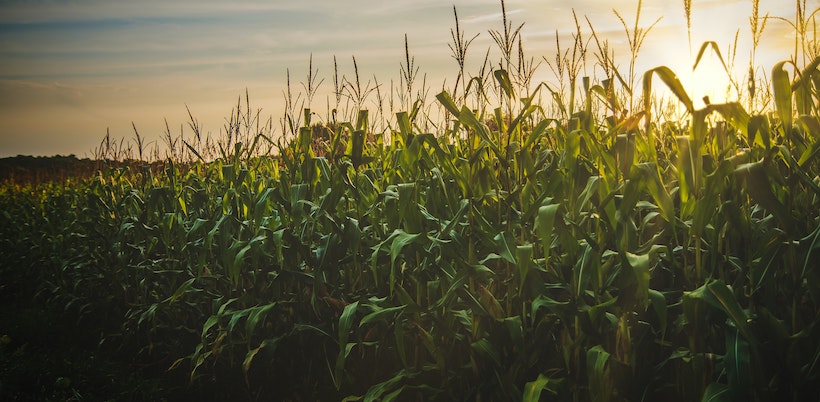
First cultivated in the south of modern-day Mexico around 6,000 - 10,000 years ago, corn spread across North and South America, making it to the American Southwest by 4,000 B.C.E.
In the 1400s, when Christopher Columbus embarked on his voyage to the New World (Americas), he appointed two Spaniards to discover new crops and foods. After discovering corn (among other crops!), they brought it back to Europe and the Old World after exchanging products, plants, and foods with the New World.
A large percentage of the world's maize is grown in America – roughly 90 million acres are dedicated to corn. The production is generally concentrated in a region called 'Heartland' (the U.S.'s central land region). This region includes Illinois, Iowa, Indiana, South Dakota, Nebraska, Ohio, and Kentucky.
Otherwise known as "genetically modified organisms," G.M.O. corn is scientifically modified to add (or delete) genes in the corn plant. G.M.O. Corn – usually Genetically Modified Maize – concentrates on genes to resist pests, drought, herbicides, and other stressors.
G.M.O. foods are controversial – although humans have always applied selective pressure to livestock and crops, there's still the risk of introducing allergens or negative characteristics to previously healthy food. There's also the risk that any modified or added genes affect animals or other plants outside the ones scientists meant to target.
At least one hybrid corn meant for animal feed – StarLink – was recalled after it made it to grains meant for human consumption, possibly causing allergic reactions in some unlucky eaters.
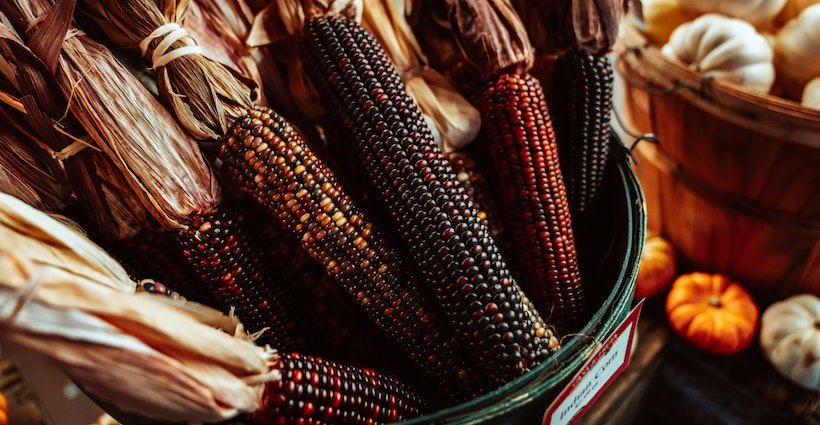
From a goofy looking grain to one of the largest staple crops on earth – corn's truly is a fantastic story. Not only does it yield plenty of nutrition to feed a growing world, but it also can yield sweeteners, fuel sources, and even plastic. Beyond that, it even inspired the uber-controversial candy corn.
Hopefully, this history overview was interesting for you. If you think of it after the next time you're eating corn on the cob or pouring milk on your corn flakes, drop me a comment!
Very good article. There is so much background to corn modern uses. I enjoyed this article.
I heard corn doesn't grow in the "wild" so I was curious how it came to be a crop at all. Your article has answered all my questions!
I disagree with a part of your article. Good read and interesting history if it is true history. The means to modify corn thousands of years ago seems really out there. And the seed companies only care for profits and that is why the farmers are forced into buying the seed every year. Personal opinion you need more logic and thorough thinking before even making out like GMOs are a good thing when they aren't. Do your research on GMOs.